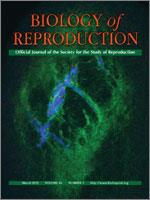The expressions of genes involved in cholesterol efflux increase, whereas those involved in extracellular cholesterol uptake decrease, during spontaneous functional regression of the primate corpus luteum (CL). This may result from liver x receptor (LXR) alpha (official symbol NR1H3) and/or beta (official symbol NR1H2) control of luteal gene transcription, because these nuclear receptor superfamily members are key regulators of cellular cholesterol homeostasis. Therefore, studies were conducted to assess endogenous LXR ligands in the primate CL through the luteal phase, and to determine the effect of synthetic or natural LXR ligands on cholesterol efflux and uptake in functional primate luteal cells. Using high-performance liquid chromatography tandem mass spectrometry, three LXR ligands were identified and quantified in the rhesus macaque CL, including 22R-hydroxycholesterol (22ROH), 27-hydroxycholesterol (27OH), and desmosterol. Levels of 22ROH paralleled serum progesterone concentrations, whereas mean levels of 27OH tended to be higher following the loss of progesterone synthesis. Desmosterol was present throughout the luteal phase. Functional macaque luteal cells treated with the synthetic LXR agonist T0901317 or physiologically relevant concentrations of the endogenous luteal ligands 22ROH, 27OH, and desmosterol had increased expression of various known LXR target genes and greater cholesterol efflux. Additionally, T0901317 reduced low-density lipoprotein receptor protein and extracellular low-density lipoprotein uptake, whereas 27OH decreased low-density lipoprotein receptor protein, most likely via a posttranslational mechanism. Collectively, these data support the hypothesis that LXR activation causes increased cholesterol efflux and decreased extracellular cholesterol uptake. In theory, these effects could deplete the primate CL of cholesterol needed for steroidogenesis, ultimately contributing to functional regression.
How to translate text using browser tools
7 December 2011
Liver X Receptor Modulation of Gene Expression Leading to Proluteolytic Effects in Primate Luteal Cells
Randy L. Bogan,
Andrea E. DeBarber,
Jon D. Hennebold
ACCESS THE FULL ARTICLE

Biology of Reproduction
Vol. 86 • No. 3
March 2012
Vol. 86 • No. 3
March 2012
corpus luteum
functional regression
liver x receptor
luteolysis
reverse cholesterol transport
Rhesus macaque




